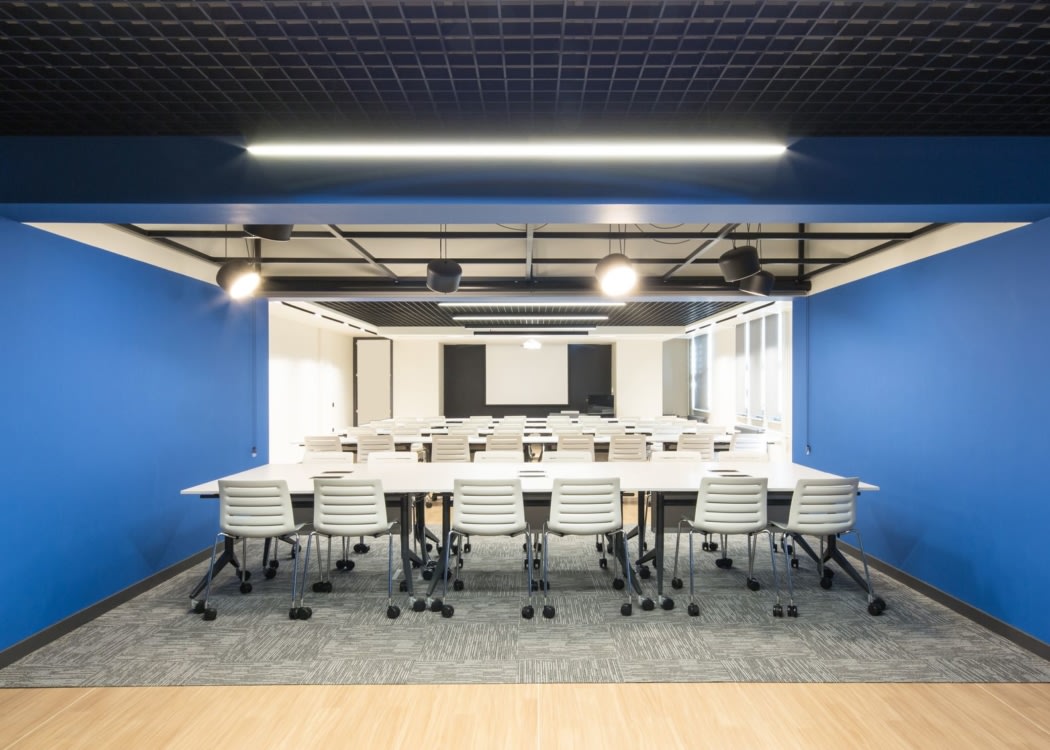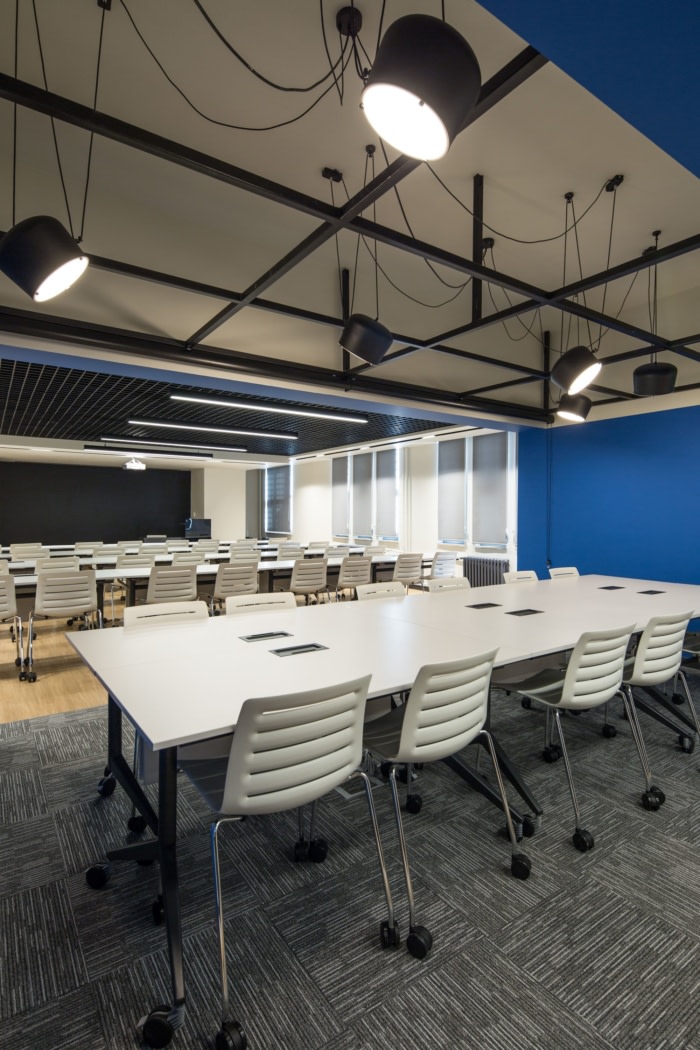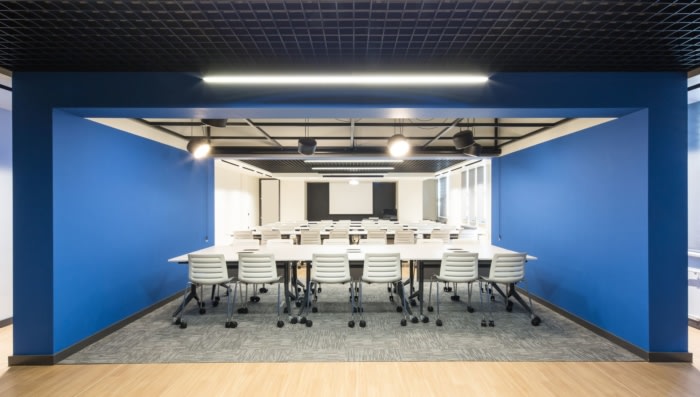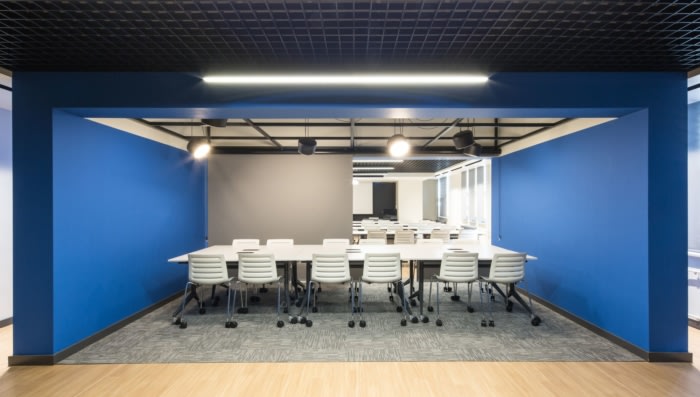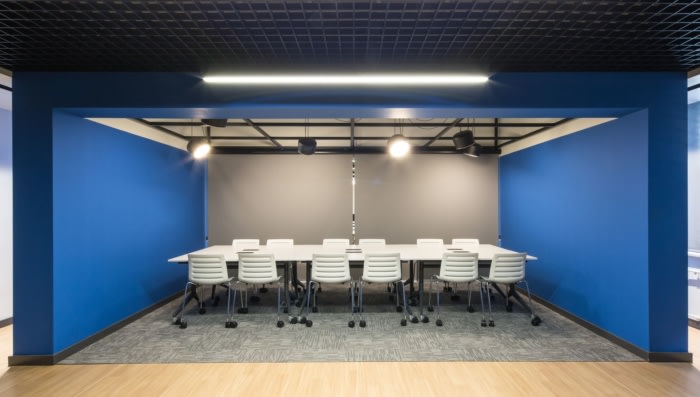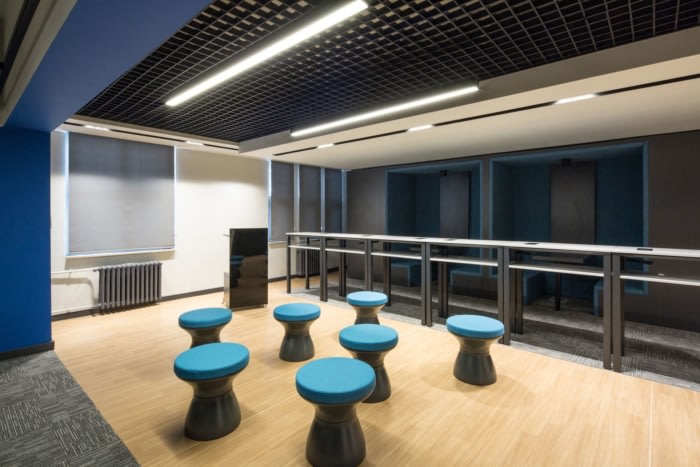The Co-Learning Hall of METU Department of Business Administration
Motto Architecture designed a space of possibilities that supports continuous interaction at the Co-Learning Hall of METU Department of Business Administration in Ankara, Turkey.
The building of Middle East Technical University Faculty of Economics and Administrative Sciences, which hosts the Department of Business Administration, was constructed in 1991. In the course of time, with the increasing number of students, developing technologies and new modes of learning, certain spaces within the building started to lack in responding to contemporary needs. There have been piecemeal efforts to improve the performance of the building via ad-hoc interventions, and the old PC laboratory can be considered as an example of such zones in the building. The laboratory space which is used to function in a conventional layout with desks of computers placed on the sides of a central corridor was in a sense invaded by ad-hoc server rooms and cubicles, causing a complete jam. That being the case, the laboratory was only used for a few hours for specific courses and was idle for the rest of the day. The design for the renovation of the laboratory aims to unite learning activities with social functions and convert the lab from a conventional classroom with limited use into a multi-functional space of interaction.
The laboratory, functioning as a lecture hall in the present, has been re-programmed to provide space 24-7 also for non-lecture activities such as group meetings, co-working, or private studies. In order to enable various functions to take place simultaneously, the space has been divided into two zones that serve as lecture-seminar space and non-lecture space by introducing an “autonomous” sub-space in their intersection.
Following the division of lab space into zones, the design proceeded by considering scenarios for expansion and contraction of functions. In this respect, it is possible to expand lecture space to include the central meeting space or isolate it completely by lowering the blinds, to join the meeting space with non-lecture space, or isolate all zones separately. The blinds serve as operable separators dividing or uniting spaces inline with the visual and audial requirements. In a third scenario, whole space can be converted into a large single lecture hall by reconfiguring seating and rolling the blinds up. In order to meet various requirements, the technical infrastructure of the space has to be planned to enable operation of alternative scenarios.
In this respect, the data infrastructure of the hall has been reconfigured to enable the operation of wired and wireless networks, screens and presentation boards. All data and power infrastructure has been located in the floor to allow flexibility in reconfiguring space. Lighting scheme has been designed to provide alternative intensities and color temperatures to suit various uses. Although the space is redefined to house various activities in a single space, none of the designed zones feature fixed enclosures. The only permanent dividers in the room are the two parallel walls, which define the central subspace and direct circulation of the room towards the sides. Relocation of circulation from the center towards the facades enable an undivided use of space in addition to providing a practical solution for preventing unwanted glare and brightness on the desks which were previously located adjacent to the windows.
The two parallel walls also serve as presentation surfaces by virtue of their infrastructural hardware. Another design feature enabling multi-functional use is the modular and mobile pieces of furniture. The large meeting table in the center can be disassembled into separate desks in seconds. Standing desks can be reconfigured to serve as desks upon requirement. The lectern can be utilized in various configurations, be hidden behind the presentation wall when not in use, and can be moved with ease by virtue of its lightweight structure and finishes. Within the non-lecture space, groups of 4-6 can gather in focus-study booths, groups of 12 can gather in the meeting zone, or the lectern and seating can be reconfigured to house a pop-up meeting and discussion zone.
By the help of its new infrastructure, dividing-unifying elements, and the carefully balanced organization of fixed and mobile elements, The Co-Learning Hall of METU Department of Business Administration serves as a space of possibilities that serves the user 24-7.
Architect: Motto Architecture
Design Team: Onur Özkoç, Heves Beşeli, Elif Görkem Köse, Gizem Görgün
Photography: Duygu Tüntaş

